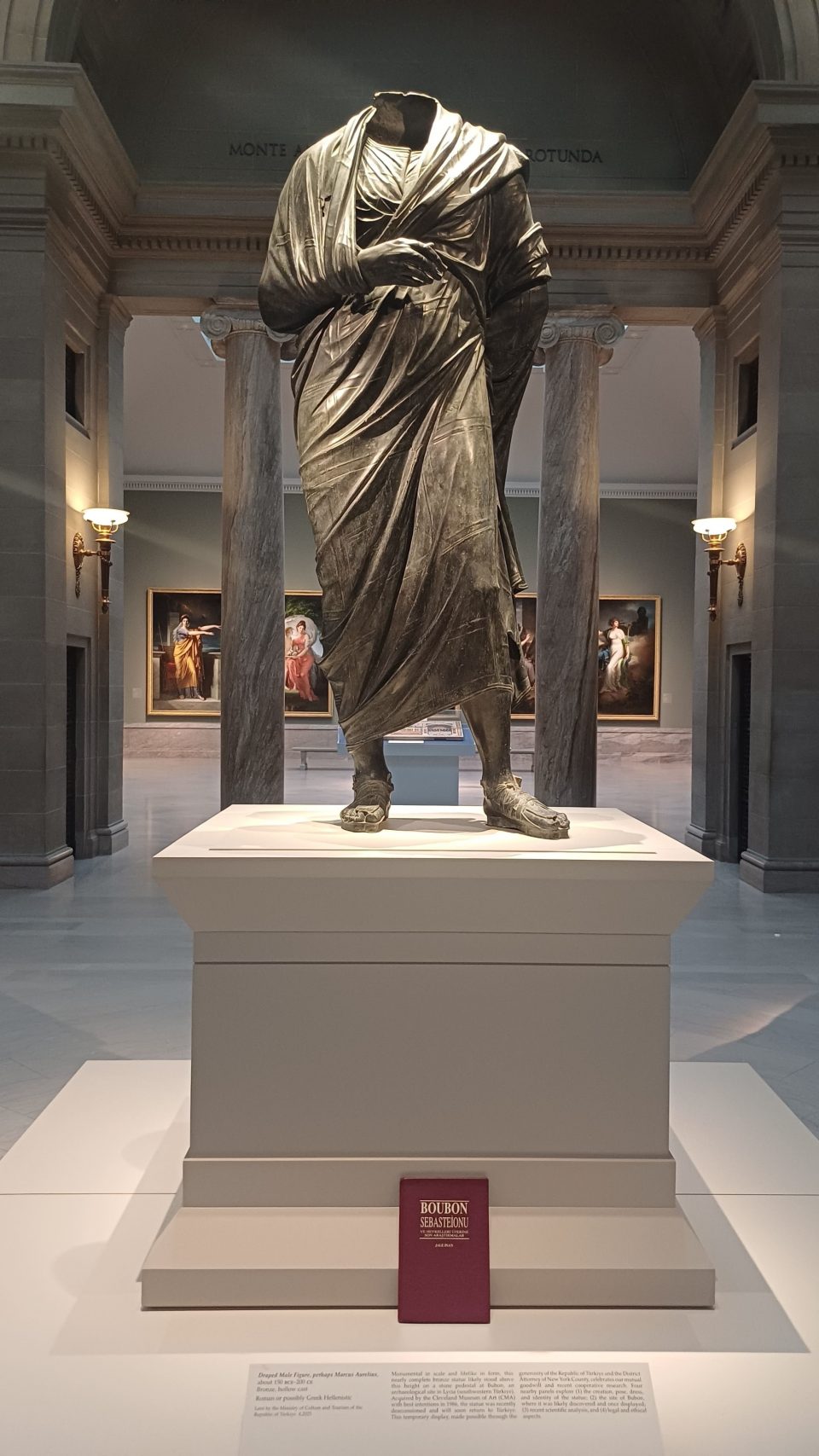Türkiye, as part of its enduring commitment to the sustainability of cultural heritage, has achieved another milestone in preservation and repatriation efforts. After 65 years, the bronze statue of Roman Emperor Marcus Aurelius, looted from the ancient city of Boubon in Burdur, was returned to its homeland in cooperation with U.S. authorities, following its years-long display at the Cleveland Museum of Art in Ohio. This was made possible thanks to the collaborative efforts of the Turkish Ministry of Culture and Tourism, the Manhattan District Attorney’s Office, and U.S. Homeland Security Investigations.
The Marcus Aurelius statue, dating back to the 2nd and 3rd centuries CE, is a unique piece of ancient art history for its depiction of the Roman Emperor as a philosopher. Considered one of the most exquisite bronze sculptures in Anatolia, the artefact was illicitly excavated and smuggled out of Boubon, located in the Gölhisar district of the southwestern province of Burdur, in the 1960s.
The piece changed hands over the years before being acquired by the Cleveland Museum of Art. The statue has been repatriated from the USA following a long and determined legal and diplomatic effort and will soon be displayed to the public in an exhibition in the Turkish capital, Ankara.
A cultural victory of science and determined legal and diplomatic efforts
Although the Cleveland Museum of Art appealed the seizure order and filed a lawsuit challenging the statue’s association with Boubon, Türkiye agreed to scientific analyses to substantiate its claim. For analysis, a silicone cast of the statue’s foot was taken under the supervision of the Turkish Ministry experts in May 2024 and documented to match precisely with the bases found in the ancient city of Boubon. Soil and lead-carbon samples were also collected with extreme care. Analyses conducted by Prof. Ernst Pernicka at the Curt Engelhorn Archaeometry Centre laboratories in Germany definitively confirmed that the statue was indeed once standing in the Sebasteion. Furthermore, a soil sample from the interior of the statue has a very similar chemical composition and strontium isotope ratio as three soil samples from Boubon and a further soil sample from the interior of the “Valerianus” statue in the Burdur Museum, which was reportedly found at Boubon. Following the findings of recent research, the Cleveland Museum of Art withdrew from the legal proceedings concerning the statue and agreed to its return to Türkiye.
The Minister of Culture and Tourism of the Republic of Türkiye, Mehmet Nuri Ersoy, described this significant restitution as a “historic achievement” in a statement shared on his social media account.
In his message, Minister Ersoy stated that the process, carried out in collaboration with the Manhattan District Attorney’s Office and U.S. Homeland Security Investigations, represents more than just the return of a cultural artifact—it stands as a historic success made possible through the combined power of diplomacy, law, and science.
Although the process began with considerable challenges, it is encouraging that it ultimately concluded in a constructive manner, laying the groundwork for future cooperation between the Museum and the Ministry.
Türkiye’s Global Vision for Cultural Legacy
The return of the Marcus Aurelius statue to Türkiye is not just a cultural victory but also a shared success of international law, science, and diplomacy. It is also one of the most significant milestones in Türkiye’s ongoing fight against the illicit trafficking of antiquities. The country remains steadfast in its efforts to recover all cultural heritage assets that have been smuggled abroad. These repatriation works are part of Türkiye’s broader vision focused on the preservation and sustainable management of its rich cultural heritage. As part of the ‘Legacy for the Future Project’, which extends excavations nationwide and throughout all seasons, the country sustains excavation and restoration work in many ancient sites and aims to increase the number of enlightening archaeological works to 800 by 2026.

